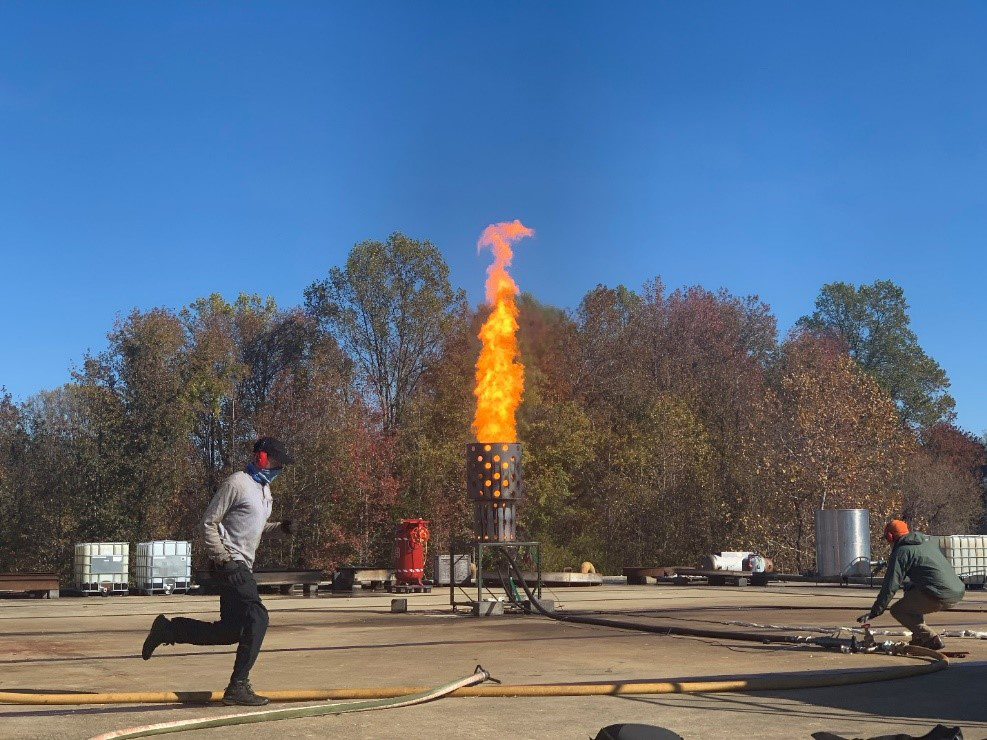Phone: (410) 257-4002
About
The Chesapeake Bay Detachment (CBD) covers 157.6 acres contiguous to the Chesapeake Bay with a three-quarter mile waterfront. It is located in a relatively clear area away from congestion and industrial interference.
Because of its location high above the Chesapeake Bay, unique experiments using low clutter and generally low background radar can be performed at CBD in conjunction with the Tilghman Island site.
Core Capabilities
CBD operates and maintains a unique land, sea, and air facility for NRL research in areas such as radar, electronic warfare, optical devices, materials, communications, and fire research. It has a variety of plant facilities and specialized equipment to support NRL and tenant research and development projects.
The facility maintains towers for antenna support and a ship motion simulator. Off-site facilities include a 2.6-acre site with a 75-foot tower located 10 nautical miles east at Tilghman Island, Maryland, and small craft berthing located in the town of Chesapeake Beach, 2 nautical miles north of the main site.
A test control center for air and sea operations is available to researchers who use the NRL/CBD test range. The test range is a restricted zone directly east of the main site and extending across the bay. Research watercraft include an 88.5-foot TWR-6 and a 22-foot Boston Whaler. These are used primarily in support of research projects and secondarily as transport to Tilghman Island.
Fire Research Capabilities and Facilities
Navy Technology Center for Safety and Survivability (NTCSS) – The goal of the NTCSS is to enhance the protection of Navy personnel and platforms from damage and injury in peace and wartime, NTCSS performs Research, Development, Test and Evaluation (RDT&E) on fire and personnel protection, fuels, chemical defense, submarine atmospheres, and damage control aspects of ship and aircraft survivability. NTCSS supports Navy and Marine Corps requirements in these areas and acts as a focus for technology transfer in safety and survivability.
- Combustion and Reacting Transport – The Combustion Science and Fire research facilities include an intermediate and full-scale facility at CBD and the Joint Maritime Test Facility (JMTF) to conduct basic to advanced research. The facilities support current and future fire suppression systems relevant to large-scale fire, provide resources for technology development/transition, and fire hazard assessment analysis/ Live Fire Test & Evaluation (LFT&E) surrogate testing in support of the Congressional Title 10 mandate. The CBD site has custom test rigs and test chambers to evaluate specific Navy damage control concerns on surface ships and submarines. The combustion research is supported by a large spray combustion test building and a range of optical diagnostic equipment for high-speed velocimetry, spray measurement, acoustics, thermometry, chemical species measurement, and imaging in ultraviolet, visible, and infrared. Research also assists with developing performance standards and large scale testing for new Fluorine-Free-Foam products.
- Shipboard and Field Operations – S&T focus areas include: “Fire Science” – development of new fluorine fire surfactants; “Power & Energy” – composite solid fuel combustion mechanisms, rarified gas diagnostics development, and gas turbine combustion R&D; and “Pollution Remediation” – emulsified crude oil burner development, Computational Fluid Dynamics (CFD) validation for in situ well head burning efficiencies, and cone calorimetry for crude oil heat release studies.
